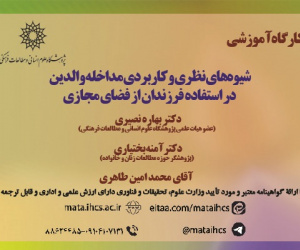نقش ویژگی های زمینه ای شهروندان در مواجهه با عوامل استرس زا محیطی در فضای شهری (مورد مطالعه: منطقه 10شهر مشهد) (مقاله علمی وزارت علوم)
درجه علمی: نشریه علمی (وزارت علوم)
آرشیو
چکیده
کیفیت محیط یکی از عوامل مهم در آرامش روانی و استرس شهروندان است. براین اساس مطالعه حاضر تلاش دارد استرس تجربه شده در فضای شهر را برحسب ویژگی های اکتسابی وغیراکتسابی شهروندان در منطقه۱۰شهرمشهد مورد سنجش قراردهد و همچنین نشان دهد آیا سابقه سکونت در محیط می تواند سبب انعطاف پذیری فرد در مواجهه با عناصر استرس زا محیط شود؟ مطالعه از نوع توصیفی-تحلیلی است که با بررسی منابع مرتبط و تدوین مدل مفهومی، اقدام به دسته بندی عناصر استرس زا محیط شهری در سه دسته محیط مسکونی(با۱۶متغیر)، عناصرحرکتی(شامل۱۵متغیر)و کاربری های عمده(با۱۴متغیر) شد. حجم نمونه باتوجه به نوع آزمون های آماری،250نفر از ساکنین منطقه10تعیین گردید. داده های جمع آوری شده پس از کدگذاری و ورود به نرم افزارSpss، با بهره گیری از روش های آمارتوصیفی و استنباطی نظیر نظیر آزمون تی، همبستگی، خط ترند و ضریبR2 و همچنین جداول متعامد مورد تحلیل قرارگرفت. نتایج نشان دادکه عناصرمحیطی، سطح استرس بیشتری را در بین متاهلان(درمقابل مجردان)، زنان(درمقایسه مردان)، افراد مسن(درمقابل جوانان) و افراد باسوادتر (درمقابل افرادکم سوادتر) به همراه داشته است. از سوی دیگر بررسی سابقه سکونت نیز نشان داد که باافزایش آن، سطح استرس تجربه شده افراد از محیط شهری کاهش می یابد که این موضوع بیشترین اثر را بر افراد مسن و افراد با سطح تحصیلات بالاترداشته است. یافته های تکمیلی مشخص کرد که استرس تجربه شده افراد از یک محیط در محیط های دیگر نیز انتشار می یابد. ازاین رو سطح آرامش فرد از محیط مسکونی، می تواند نقش مهمی در احساس وی از محیط های پیرامونی داشته باشد. درنهایت توجه به مقیاس های انسانی و تلاش به منظور اهمیت دادن به ساختار محله در برنامه ریزی ها می تواند نقش مهمی در انعطاف پذیری افراد در مواجهه با عناصر استرس زا محیطی داشته باشد.The Role of Contextual Characteristics of Citizens in Facing Environmental Stressors in Urban Space (Case Study: District 10 of Mashhad City)
Environmental quality is one of the important factors in the psychological well-being of citizens. The present study attempts to measure the stress experienced in the urban space in terms of acquired and non-acquired characteristics of citizens in District 10 of Mashhad. The question of the present study is; Can the history of living in the environment cause a person's flexibility in facing stressors? The present study is a descriptive-analytical study that, by examining related sources and developing a conceptual model, has categorized the stressors of the urban environment into three categories: residential environment (with 16 variables), mobility elements (with 15 variables), and major land uses (with 14 variables). The sample size was determined to be 250 residents of District 10, according to the type of statistical tests. The collected data, after coding and entering into the SPSS software, were analyzed using descriptive and inferential statistical methods such as t-test, correlation, trend line, R2 coefficient, and orthogonal tables. The results showed that environmental elements were associated with higher levels of stress among married people (compared to single people), women (compared to men), older people (compared to young people), and more educated people (compared to less educated people). On the other hand, examining the history of residence also showed that as it increases, the level of stress experienced by individuals from the urban environment decreases. This issue had the greatest effect on older people and people with higher levels of education. Supplementary findings revealed that the stress experienced by individuals from one environment is also spread to other environments. Therefore, the level of comfort of an individual from the residential environment can play an important role in his or her feeling of the surrounding environments. Finally, paying attention to human scales and trying to give importance to the structure of the neighborhood in planning can play an important role in the flexibility of individuals in facing environmental stressors.











